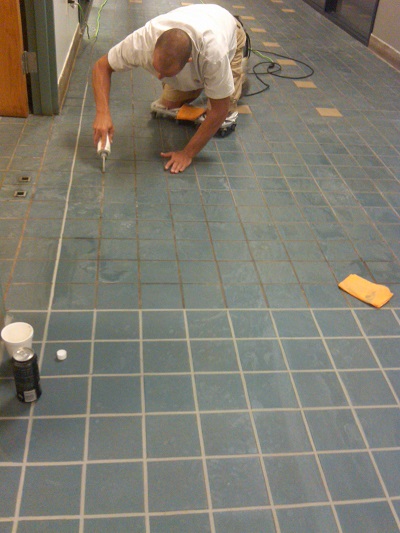Maintaining clean and hygienic tile and grout surfaces in commercial facilities is essential not only for aesthetic reasons, but also for the overall health and safety of occupants. However, it is crucial to recognize the difference between cleaning for appearances and cleaning for true effectiveness. In this article, we will explore the best practices for tile and grout cleaning, focusing on both the visible cleanliness and the hidden hygiene factors.

Understanding the Importance of Clean Tile and Grout
Tile and grout surfaces in commercial facilities are subjected to heavy foot traffic and spills, making them susceptible to dirt, stains, and even mold and mildew growth. It is crucial to prioritize regular cleaning to prevent the buildup of germs and maintain a healthy environment for employees, customers, and visitors.
Cleaning for Health, Not Just Appearances
While it may be tempting to focus solely on the visual cleanliness of tile and grout surfaces, cleaning for appearances alone can lead to unsatisfactory results in terms of hygiene. A comprehensive cleaning approach should aim to remove dirt, bacteria, and other contaminants that can compromise the health and well-being of individuals within the facility.
Establishing a Cleaning Routine
Developing a regular cleaning routine is key to maintaining clean tile and grout surfaces. Consider the following guidelines:
Daily Maintenance: Sweep or vacuum the tile surface to remove loose dirt and debris. This prevents dirt from being ground into the grout lines during regular foot traffic.
Weekly Cleaning: Use a pH-neutral cleaner specifically formulated for tile and grout. Avoid acidic or abrasive cleaners, as they can damage the surfaces. Follow the manufacturer’s instructions for dilution and application. Thoroughly mop the floor, paying special attention to the grout lines.
Monthly Deep Cleaning: Periodically, deep clean the tile and grout surfaces using a professional-grade tile and grout cleaner. This helps remove embedded dirt and stains that may not be visible to the naked eye.

Proper Cleaning Techniques
To achieve optimal results, employ the following techniques:
Pre-Treat Stains: Treat stubborn stains with appropriate cleaning solutions before starting the regular cleaning process. Let the solution sit for a few minutes to break down the stain, then gently scrub with a soft-bristle brush.
Grout Line Cleaning: Pay extra attention to the grout lines as they are prone to discoloration and harboring bacteria. Use a grout brush or an old toothbrush along with a mild cleaner to clean the lines thoroughly.
Hot Water Extraction: For deep cleaning, consider using a professional hot water extraction system. This method is highly effective in removing dirt, grime, and contaminants from tile and grout surfaces, leaving them sanitized and refreshed.
Sealant Application
After thoroughly cleaning tile and grout, applying a high-quality sealant is highly recommended. Sealants create a protective barrier that helps prevent staining and makes future cleaning easier. Consult with a professional to choose the right sealant for your specific tile and grout surfaces.
Maintaining clean and hygienic tile and grout surfaces in commercial facilities requires a comprehensive approach that goes beyond mere appearances. By adopting the best practices discussed in this article, facility owners and managers can ensure environments that are not only visually clean, but also healthy. Regular cleaning routines, proper techniques, and the use of professional services will contribute to the longevity and cleanliness of tile and grout surfaces.

This guest article was written by Jennifer Kis on behalf of SOLID Surface Care Inc. Her passion for maintaining and preserving commercial surfaces shines through her informative and engaging articles.
